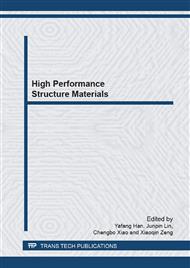p.526
p.535
p.540
p.549
p.559
p.564
p.569
p.575
p.582
A New Deformation Region and How Low Do You Go? – "Intrinsic Deformation Limit"
Abstract:
The creep deformation in pure aluminum was investigated using helicoid spring samples at room temperature, 298 K, and σ < 1.19 MPa. It was found that the stress exponent is n = 0, which means the creep behavior in this region is independent on applied stress but some physical properties of materials. The creep behavior was suggested to be controlled by surface diffusion based on the strongly effect of surface area on creep behavior only in this creep region (n = 0). The threshold creep rate, , called intrinsic deformation limit, decided by surface diffusion was suggested. This discovery provided a new perspective to understand the extremely slow deformation in the nature.
Info:
Periodical:
Pages:
559-563
Citation:
Online since:
February 2013
Authors:
Keywords:
Price:
Сopyright:
© 2013 Trans Tech Publications Ltd. All Rights Reserved
Share:
Citation:


